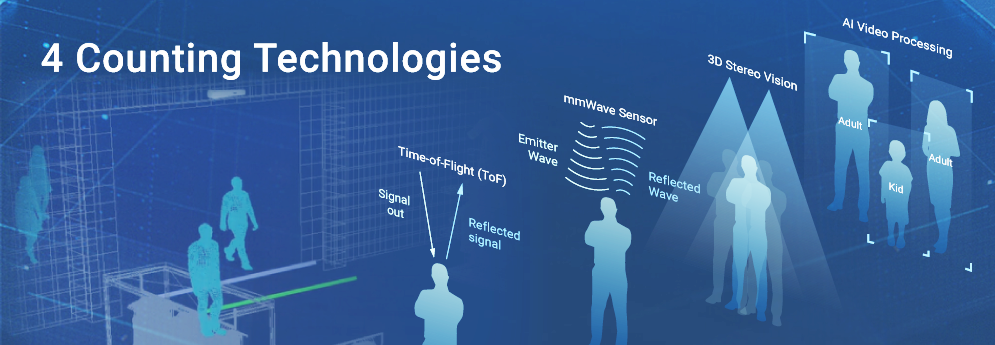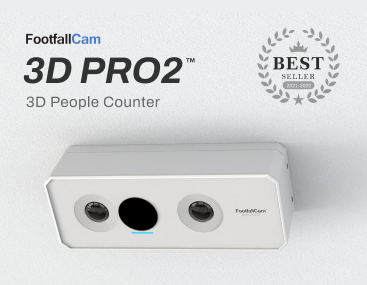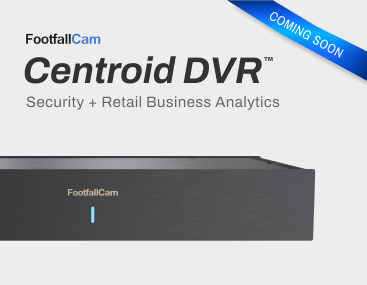From Time of Flight and 3D Stereo Vision to AI video processing and mmWave, each approach brings its own strengths and limitations. Make an informed decision on the technology that best suits your people counting requirements.

When comparing Time of Flight, 3D Stereo Vision, AI video processing, and mmWave in people counting, it’s important to consider their respective technologies, strengths, and limitations. Here’s an overview of each approach:
Time of Flight (ToF): Time of Flight is a technology that measures the time it takes for light or radio waves to travel to an object and back. In people counting applications, ToF sensors emit light or radio waves and calculate the distance to objects based on the time it takes for the signal to return. ToF sensors can provide accurate depth information, allowing for precise distance measurements and object detection. They are often used in indoor settings and can work well in different lighting conditions. However, ToF sensors may have limitations in crowded environments or when there are occlusions that hinder accurate detection.
3D Stereo Vision: Stereovision uses two or more cameras to capture images from different perspectives and then calculates depth information based on the disparities between corresponding points in the images. By reconstructing the scene in three dimensions, it enables accurate people counting. Stereovision can provide detailed depth information and works well for indoor and outdoor applications. However, it may be affected by changes in lighting conditions and may require careful calibration and synchronisation between cameras for optimal accuracy.
AI video processing: AI video processing involves using computer vision algorithms and artificial intelligence techniques to analyse video footage and detect and track people. By leveraging deep learning models, AI video processing can provide real-time people counting with high accuracy. It can work with existing surveillance camera systems, making it a cost-effective solution in some cases. However, AI video processing may require significant computational resources, and its accuracy can be affected by factors such as lighting conditions, occlusions, and the quality of the training data.
mmWave (millimetre-wave): mmWave technology uses radio waves in the millimetre wavelength range to detect and track objects. In people counting applications, mmWave sensors emit and receive radio waves and analyse the reflections to identify and count individuals. mmWave sensors can operate effectively in different weather conditions and have the ability to penetrate certain materials. They can provide accurate people counting in crowded environments and have the potential for high accuracy. However, mmWave sensors may be more expensive compared to other technologies and may require careful placement and calibration for optimal performance.
When comparing these technologies for people counting, factors to consider include accuracy, reliability, cost, ease of installation, adaptability to different environments, and any specific requirements or constraints of the application. The choice of technology will depend on the specific needs and priorities of the people counting scenario.













